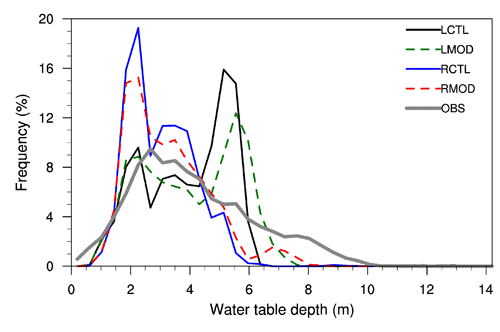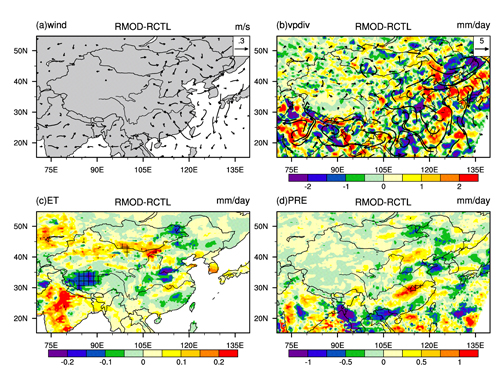IAP scientists revealed the impacts of modified Richards equation on climate simulations over East Asia
Date:2014-10-28
Soil moisture, as an important part of the hydrologic cycle, is a crucial factor in land-atmosphere interactions. Variations in horizontal and vertical soil moisture patterns change atmospheric boundary layer structures by directly modifying evapotranspiration and heat fluxes and ultimately influence convection and large-scale circulation patterns. Hence, an accurate computation of soil moisture plays a significant role in climate modeling and prediction.
Scientists from Institute of Atmospheric Physics (IAP) implemented the modified form of the Richards equation with its new lower flux boundary condition as developed by Zeng and Decker (2009) in the regional climate model RegCM4 with its land surface component CLM3.5 to investigate its potential effects on regional climate simulations over East Asia. Compared with in situ measurements, the modified numerical method improves the ground water table depth simulations in RegCM4. It also improves the temporal and spatial variability of soil moisture to some extent. Its impact on simulated summer precipitation is mixed, with improvements over three subregions in China but with increased errors in three other subregions. The impact on the simulated summer temperature is relatively small. The evapotranspiration differences between modified and control land-atmosphere coupled simulations are enhanced over the northwest subregion and Tibetan Plateau compared to offline simulations due to land surface feedbacks to the atmosphere (in coupled simulations). Similarly the soil moisture differences in coupled simulations are geographically different from those in offline simulations over the eastern monsoon area. The summer precipitation differences between modified and control coupled simulations are found to be explained by the differences of both surface evapotranspiration and large-scale water vapor flux convergence.
Their finding was recently accepted by Journal of Geographical Research-Atmospheres.

Fig.1 Histograms of the monthly water table depths (Jan 1993– Dec 2001) from observations and model simulations.

Fig.2 Mean differences in JJA (1993-2001) in (a) 850 hPa wind (ms-1), (b) water vapor flux vector () and its divergence (mm/day), (c) evapotranspiration (mm/day), and (d) precipitation (mm/day) between the RMOD and RCTL runs. Note that the color bars differ for various panels.
References:
Yu Y, Z. H. Xie, and X. B. Zeng (2014), Impacts of modified Richards equation on RegCM4 regional climate modeling over East Asia, Journal of Geophisical Research-Atmospheres, doi: 10.1002/2014JD021872.
Zeng, X. B., and M. Decker (2009), Improving the Numerical Solution of Soil Moisture-Based Richards Equation for Land Models with a Deep or Shallow Water Table, Journal of Hydrometeorology., 10(1), 308-319, doi: 10.1175/2008jhm1011.1.
